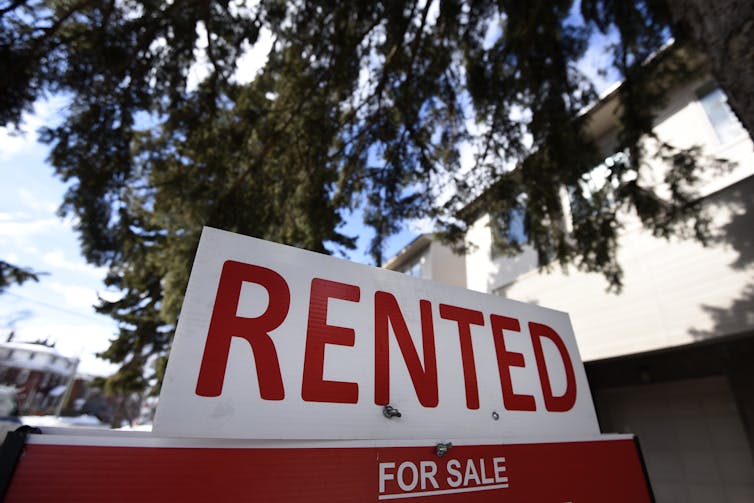51³Ô¹Ï the authors:ÌýÌýis a Full Professor and Associate Vice-President, Research atÌýÌýandÌýÌýis an Associate Professor in the School of Planning atÌý.
The (NHS) is a 10-year, $72-billion effort launched in 2017 to address key areas in the Canadian housing landscape. Its goals include increasing housing affordability and reducing homelessness. But research shows that halfway through implementing the strategy, the vast majority of people in — below the thresholds for housing adequacy, affordability or suitability — are not benefiting from NHS programs.
Housing need is measured differently across countries: for example, include:
- Housing-related expenditure, including rent, maintenance and repair, and utility bills such as water and electricity.
- The ratio of housing costs over income.
- Ability of households to keep the dwelling warm.
- Subjective measures on housing. These include the percentage who are satisfied with the availability of good, affordable housing in their city or area; who have not had enough money to provide adequate shelter sometime in the last 12 months; who are satisfied with the current public transit systems; who feel safe walking home at night; and who are satisfied with their city or area.
Using these measures and datasets from around the globe, the OECD concludes that housing expenditure increased on average by five percentage points from 2010 to 2015, although housing expenditure decreased in a number of OECD countries, such as Mexico, Bulgaria and Lithuania.
Housing cost burden as a share of disposable income is highest among low-income households, regardless of the country. The OECD considers people overburdened by housing costs if they spend over 40 per cent of their disposable income on housing. Housing insecurity has increased in most OECD countries in the past 15 years, though eight out of 10 Gallup poll participants (of which there were about 1,000 from each OECD country) were satisfied with their city/area.
Core housing need

In Canada, . That means they either live in housing that is unaffordable (defined as costing more than 30 per cent of their pre-tax household income), unsuitable (the size of their household is too large for their unit) or inadequate (their housing is in poor repair), and they cannot afford alternative housing in their community.
Households in core housing need range from a low of 6 per cent in Québec to a high of 32.9 per cent in Nunavut, using 2021 Census data. Renters are also much more likely to be in core housing need: 20 per cent of renters compared to just 5.3 per cent of owners.
Affordability is the major housing challenge, affecting 77 per cent of people in core housing need. The OECD measure for housing cost burden excludes income tax and uses a higher threshold (40 per cent of household income) compared to the Canadian measure of core housing need, which includes income tax and uses a threshold of 30 per cent.
The NHS, launched in 2017, was meant to decrease the number of households in core housing need, but the level remained stable at 12.7 per cent of all households from the 2006 to the 2016 Census, and most provinces and territories haven’t seen much change. Those that have (such as Québec, P.E.I. and New Brunswick) , well before the NHS came into effect.
Slow movement on affordability
The NHS has had little effect on affordability, with most of its programs focusing on market housing and private sector developers. The federal Office of the Parliamentary Budget Officer reviewed the NHS in 2021, and found that there has been just $37.5 billion spent or planned to be spent over ten years, including $12 billion that was committed before 2018-19. and cost-matching funds on joint provincial/territorial programs that were counted twice.

As economist Marc Lee pointed out in a policy note for the Canadian Centre for Policy Alternatives, : about 0.1 to 0.2 per cent of GDP. In his breakdown of the programs being used to fund new housing construction or renovation of existing units, Lee notes that 55,458 units were announced as funded through NHS programs. However, just 17,497 of them are affordable, with each program using different criteria for affordability, including requirements to stay affordable for a certain number of years.
showing that just three per cent of units produced through the would lift households out of core housing need. The NHS program provides developers with low-cost loans to build rental housing.
Only one NHS program, the , produces units that do not cost more than 30 per cent of pre-tax household income and that stay affordable for 20 years.
The National Housing Council noted that supply created through the NHS does not meet the needs of those in core housing need, and will likely not change the number of people in core housing need. It recommends moving funds away from market-driven programs like the Rental Construction Financing Initiative and towards bilateral programs and demand-side interventions like the : a program for low-income households who are spending over 30 per cent of their household income on market rent in their area.
For example, in Ontario, helps people who are on the waiting list for public housing.
Potential improvements
Innovations seen during the pandemic, such as increased uptake of the Rapid Housing Initiative to convert hotels to shelters for people experiencing homelessness, could be extended. The 2022 Federal Budget recommended an increase to funding for the Rapid Housing Initiative program that includes renovations of existing buildings and modular construction.
In 2020, housing policy researcher Steve Pomeroy recommended as a policy to strengthen the NHS. Purchases by these investors resulted in the loss of 320,000 affordable units from 2011 to 2016. Enabling non-profits to buy these units instead, for example through the right of first refusal when they come up for sale, would ensure these units stay affordable long-term.
The creation of more permanently affordable housing, such as modular units, and strategies to increase people’s ability to pay for housing, were also among Pomeroy’s suggestions.
The asserts that housing is a human right and that the NHS would focus on improving outcomes for people in the greatest housing need, as well as including engagement of diverse groups and achieving social, economic, health and environmental outcomes.
However, major decreases in core housing need won’t come through the current NHS programs. Recommendations from several key reports published in the past two years would strengthen the programs to deliver substantially more affordable units through construction, acquisition and renovation to make sure that our most vulnerable households are safely and permanently housed in the future.
Housing, as , deserves our full attention now.
Holly Blackmore co-authored this article. She is a graduate from the Dalhousie University Planning program where she completed her undergraduate degree under Prof. Ren Thomas’s supervision.
This article is republished from under a Creative Commons license. Read the .

